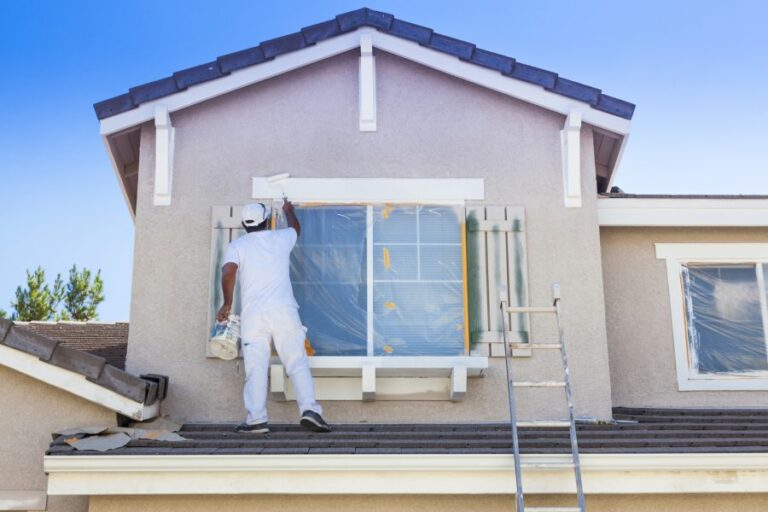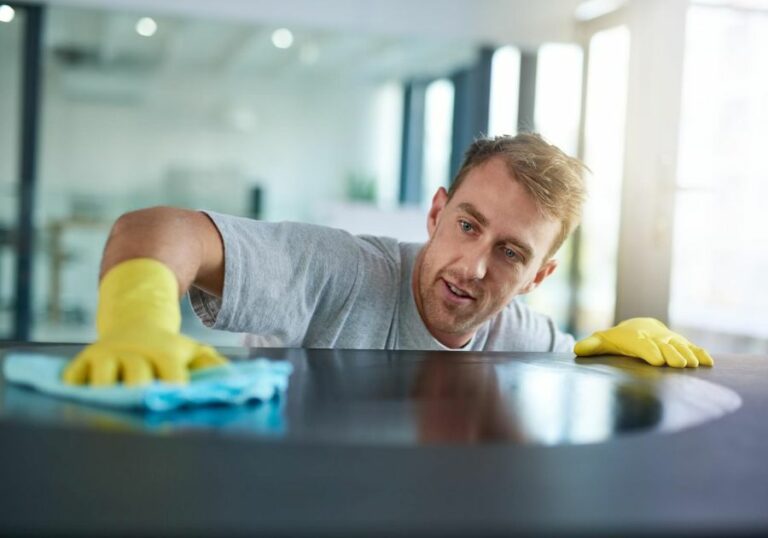Comprehensive Chemical Cleaning Guide. What Pros Say
Are you overwhelmed by the endless number of chemical cleaning products on the market and unsure which ones to use for specific cleaning tasks? Don’t worry, as we have got you covered with our comprehensive chemical cleaning guide. By following this carefully crafted guide, you can confidently tackle even the toughest cleaning jobs with ease.
Comprehensive chemical cleaning guide:
Chemical cleaning is vital in maintaining and optimizing the performance of industrial systems and equipment performance by using specific chemical solutions to remove unwanted deposits, contaminants, and corrosion. This technique includes methods such as acid, alkaline, solvent, ultrasonic, and detergent cleaning and is utilized across various industries like oil and gas, pharmaceutical manufacturing, and food production. Benefits include improved performance, increased equipment lifespan, and cost savings while adhering to safety precautions ensures efficient and safe usage.

Dive into our Comprehensive Chemical Cleaning Guide! Uncover expert-approved techniques, vital safety precautions, and the perfect cleaning solutions to make your surfaces sparkle like never before. Read on and elevate your cleaning game.
Contents
- 1 In-Depth Guide to Chemical Cleaning Techniques
- 2 Exploring the Four Techniques of Chemical Cleaning
- 3 Understanding R1-R5: Housekeeping’s Key Components
- 4 Discovering the 9 Essential Cleaning Chemical Types
- 5 Examining the Top Five Categories of Cleaning Chemicals
In-Depth Guide to Chemical Cleaning Techniques
• Introduction to Chemical Cleaning
Chemical cleaning is an essential aspect of maintaining and optimizing the performance of various industrial systems and equipment. It involves the use of specific chemical solutions to remove unwanted deposits, contaminants, and corrosion from surfaces.
• Methods of Chemical Cleaning
There are several methods of chemical cleaning used in different industries, some of which are highlighted below:
1. Acid Cleaning
Acid cleaning, also known as pickling, is a process where acid solutions are used to remove scale, rust, and other contaminations from metal surfaces. Acid cleaning is a common method in industries such as oil and gas, power generation, and metal fabrication.
Some acids typically used for this purpose include hydrochloric, sulfuric, and phosphoric acids. An example of a standard acid cleaning procedure can be found on the U.S. Department of Energy’s website.
2. Alkaline Cleaning
Alkaline cleaning is a process that uses alkaline solutions like sodium hydroxide, sodium carbonate, or potassium hydroxide to remove grease, oil, and organic contaminants from surfaces.
This method is widely employed in industries like food and beverage, pharmaceutical manufacturing, and automotive manufacturing.
3. Solvent Cleaning
Solvents are used in this method to dissolve contaminants, such as oil, grease, and dirt, from surfaces. Some common solvents include acetone, toluene, and isopropyl alcohol. Solvent cleaning is commonly employed in industries like electronics, aerospace, and automotive maintenance.
4. Ultrasonic Cleaning
Ultrasonic cleaning utilizes high-frequency sound waves to remove dirt, dust, and other contaminants from surfaces. This technique is often used alongside other chemical cleaning methods, as it can enhance the overall cleaning performance.
Ultrasonic cleaning is popular in industries like medical device manufacturing, jewelry production, and electronics cleaning.
5. Detergent Cleaning
Detergent cleaning involves the use of water-based cleaning agents to remove dirt, oils, and other contaminants from surfaces. This method is widely employed in both industrial and household cleaning applications.
• Applications of Chemical Cleaning
Chemical cleaning is essential in various industries and applications, including but not limited to:
- Heat Exchanger and Boiler: Cleaning Chemical cleaning is utilized to remove rust, scale, and other deposits from heat exchangers and boilers, enhancing efficiency and performance.
- Pipeline Cleaning: Chemical cleaning methods are used to clean and maintain pipelines, particularly in the oil and gas industry.
- Industrial Equipment Cleaning: Chemical cleaning processes can be employed to maintain and clean different types of industrial equipment, including storage tanks, reactors, and cooling towers.
- Pharmaceutical Manufacturing: Chemical cleaning in the pharmaceutical industry ensures that equipment is free from any residue or contamination to maintain product safety and quality.
- Food and Beverage Industry: Chemical cleaning plays an essential role in maintaining hygiene and safety in food processing and production facilities.
• Advantages of Chemical Cleaning
Using chemical cleaning methods can provide several benefits, including:
- Improved Performance: Chemical cleaning aids in maintaining the optimal performance of equipment and machinery.
- Increased Lifespan: Regular chemical cleaning can extend the lifespan of equipment by removing deposits and contaminants that may cause corrosion and damage.
- Cost-Effectiveness: Chemical cleaning can help reduce maintenance costs by avoiding the need for more expensive repair or replacement options.
- Time Savings: Chemical cleaning methods can often be completed within relatively short timeframes, minimizing downtime and production disruptions.
• Safety Precautions for Chemical Cleaning
It is crucial to follow safety protocols during chemical cleaning processes. Some precautions to take into account include the following:
- Proper Training: Ensure that staff members performing chemical cleaning are adequately trained and experienced.
- Personal Protective Equipment (PPE): Wear appropriate PPE, such as gloves, safety goggles, respirators, and chemical-resistant clothing.
- Follow Procedures: Adhere to established chemical cleaning procedures and guidelines specific to the equipment or system being cleaned.
- Disposal and Environmental Considerations: Dispose of chemical cleaning waste and contaminants as per regulatory requirements to mitigate environmental harm.
• Conclusion
Chemical cleaning is an integral part of industrial maintenance and provides several benefits such as improved performance, increased equipment lifespan, and cost savings.
By understanding the various methods, applications, and safety precautions associated with chemical cleaning, companies can efficiently and safely utilize these techniques to maintain their equipment and facilities.
Exploring the Four Techniques of Chemical Cleaning
Chemical cleaning is an essential process for maintaining industrial equipment and systems to prevent corrosion, fouling, and particle buildup. It is vital to ensure the equipment functions efficiently, extending its service life and minimizing operational costs.
• 1. Acid Cleaning (Pickling)
Acid cleaning, also known as pickling, is a process that uses acidic solutions to remove inorganic scale, rust, and other impurities from metal surfaces. The acid dissolves these contaminants, allowing for their easy removal.
Commonly used acids include hydrochloric, sulfuric, and phosphoric acids, among others. This method is widely used in industries such as power generation, petrochemical, and water treatment.
– Essential Factors in Acid Cleaning:
- Acid concentration: The concentration of acidic solution should be appropriate, as more concentrated solutions increase cleaning efficiency but can cause damage to the equipment’s base metal.
- Temperature: Controlled heating of the acid solution typically increases the efficiency of the cleaning process. However, care must be taken not to overheat the solution, as this may lead to accelerated corrosion.
- Contact time: The duration of contact between the acid and the equipment’s surface should be carefully monitored, as excessive exposure can lead to irreversible damage, such as pitting and embrittlement.
I recommend conducting compatibility tests with the acid solutions and the metal surface and establishing optimum concentration, temperature, and contact time parameters to achieve effective cleaning while minimizing the risk of compromising the metal.
For additional information on acid-cleaning techniques, visit The National Association of Corrosion Engineers (NACE).
• 2. Alkaline Cleaning (Degreasing)
Alkaline cleaning also referred to as degreasing, uses alkaline solutions such as sodium hydroxide, potassium hydroxide, and surfactants to remove oil, grease, and process contaminants from metal surfaces efficiently.
Alkaline cleaning is an essential method in industries such as automotive, manufacturing, and aerospace.
– Crucial Factors in Alkaline Cleaning:
- Alkaline concentration: Much like in acid cleaning, selecting the appropriate concentration is crucial to strike a balance between cleaning efficiency and potential damage to the metal surface.
- Temperature & Agitation: The optimal temperature range typically improves cleaning performance, and the use of ultrasonic agitation may help to enhance the efficiency of alkaline cleaning processes further.
- Rinsing and neutralizing: Post-alkaline cleaning necessitates thorough rinsing to eliminate residual cleaning solutions from the metal surface. Additionally, neutralizing the equipment with acidic solutions after rinsing is essential to prevent potential corrosion.
When using alkaline cleaning, it is essential to determine the optimal concentration, temperature, and neutralization steps for maximum effectiveness while maintaining the integrity of the metal equipment.
• 3. Solvent Cleaning
Solvent cleaning is widely used in industries like aerospace, automotive, and electronics, as it utilizes solvents to dissolve and remove organic substances such as oils, greases, and other process-related contaminations.
Solvents such as alcohols, esters, and hydrocarbons are commonly employed for cleaning purposes.
– Key Considerations in Solvent Cleaning:
- Safety and environmental concerns: Some solvents can be hazardous to health, are flammable, or have negative environmental impacts. Always consider alternative, safer options when selecting a solvent and follow the proper safety guidelines during the cleaning process.
- Compatibility with metals and elastomers: Ensure that the solvent is compatible with the materials being cleaned and won’t cause any adverse effects.
- Disposal: Proper disposal of solvents is essential to protect the environment and comply with regulations.
• 4. Oxidation Cleaning
Oxidation cleaning, primarily used for cleaning heat transfer surfaces in boilers and heat exchangers, involves utilizing oxidizing agents such as hydrogen peroxide or ozone to break down organic contaminants.
This process efficiently removes biofilms, algae, and other deposits from the surfaces of water systems, improving heat exchange performance and reducing energy consumption.
– Crucial Factors in Oxidation Cleaning:
- Type of oxidizing agent: The selection of the oxidizing agent should be based on its compatibility with the material being cleaned.
- Concentration and application method: Optimize the concentration of the oxidizing agent and the mode of application to attain maximum cleaning efficiency without causing damage to the equipment.
I recommend considering the nature of the contamination and material compatibility when selecting an oxidizing agent and acquiring expert advice for determining the ideal application process.
In conclusion, to choose the most appropriate chemical cleaning method for industrial equipment, it is crucial to identify the nature of the contamination, analyze the compatibility of cleaning agents with the material, and optimize the process parameters.
By following these guidelines, industries can maintain the integrity of their systems, improve equipment efficiency, and extend their useful life.
Understanding R1-R5: Housekeeping’s Key Components
Cleanliness and hygiene hold paramount importance in our lives, and the concept of housekeeping has evolved greatly over the years, maturing into a specialized profession.
One of the most crucial aspects of housekeeping is understanding the principles of R1-R5. Today, we shall delve deep into this topic and help you gain a firm understanding of R1-R5 in housekeeping.
• R1-R5: Understanding the Levels of Cleanliness
The concept of R1-R5 is prominent in the field of housekeeping to define the varying degrees of cleanliness.
It helps establish a standardized framework that housekeeping professionals can work with to maintain consistency in cleaning practices across different establishments, such as hospitality, healthcare, corporate, and various other sectors. Let’s proceed to discuss the five levels in detail.
– R1: Initial Cleaning
R1, also known as the initial or basic cleaning level, forms the foundation of the R1-R5 framework. It includes general daily cleaning tasks such as dusting, mopping, sweeping, and vacuuming.
The primary goal of R1 cleaning is to maintain a visually clean environment that is free of dust and dirt, preventing the buildup of debris over time. This basic level is fundamental to a clean space and sets the stage for more advanced cleaning practices.
– R2: Intermediate Cleaning
The R2 level builds upon the foundation laid down by R1, focusing on the more intricate aspects of cleaning. Here, housekeeping professionals target specific problem areas that may require more attention.
Such areas may include stains, marks, or scuffs on surfaces. Intermediate cleaning focuses on deep cleaning and accurate techniques to remove challenging dirt and grime.
High-touch surfaces, such as door handles, light switches, and countertops, fall under the R2 category, as regular disinfection is necessary to prevent the spread of germs and viruses.
– R3: Intensive Cleaning
Intensive cleaning, or R3 level, takes the cleaning process a step further, tackling stubborn dirt, grime, and stains that R1 and R2 levels could not address.
At this stage, housekeeping professionals employ specialized equipment (e.g., pressure washers, steam cleaners) and products to treat challenging cleaning situations effectively. Examples of R3 tasks include deep carpet cleaning, restoration of surfaces, and polishing of hard floors.
This level is essential for maintaining material longevity and preserving the appearance and functionality of various spaces.
– R4: Restorative Cleaning
The R4 level focuses on the restorative aspect of cleaning. Housekeeping professionals assess the condition of materials, surfaces, and furnishings, detecting signs of wear or damage. At this stage, any required maintenance, repairs, or replacement work will be carried out.
Some common examples of R4 tasks are resealing grout, repainting walls, and refinishing wooden surfaces. By following the R4 level, housekeepers ensure the long-term preservation of an establishment’s infrastructure, fixtures, and equipment.
– R5: Preventative Measures
Finally, the R5 level revolves around the implementation of preventative measures for sustaining a clean and well-maintained environment.
This stage comprises strategies, protocols, and training to ensure that housekeeping professionals and other staff are knowledgeable about appropriate cleaning practices, safety guidelines, and emerging industry standards.
It might involve communication between different departments and regular inspections for quality control. In a nutshell, the R5 level helps organizations maintain cleanliness and prevent negligence that could lead to undesirable results.
• Personal Recommendations
As an experienced professional in the housekeeping industry, I would like to emphasize the importance of integrating best practices that apply to each R1-R5 level:
- Ensure that R1 and R2 cleaning tasks are carried out daily.
- Schedule R3 tasks regularly and focus on specific areas requiring intensive cleaning.
- Periodically review the condition of your establishment’s surfaces, materials, and furnishings, addressing any R4 tasks as needed.
- Continuously educate and train housekeeping staff, keeping them updated on the latest guidelines and safety measures.
• Resources for Further Learning
To further enhance your understanding of R1-R5 in housekeeping, I strongly recommend visiting the International Executive Housekeeper Association (IEHA) website.
This non-profit organization has been dedicated to the professional growth and development of housekeeping professionals worldwide for over 80 years, offering resources, training, and certification programs that adhere to industry best practices.
• Conclusion
In conclusion, a clear understanding of the R1-R5 system in housekeeping is essential for maintaining and preserving cleanliness and hygiene within any establishment.
As a housekeeping professional, it is crucial to efficiently apply the appropriate tasks and strategies at each level of the R1-R5 spectrum. By adopting a meticulous and responsible approach, one can ensure a clean, safe, and well-maintained environment for staff and guests alike.
Discovering the 9 Essential Cleaning Chemical Types
Cleaning chemicals are essential tools for maintaining clean and hygienic environments. They are widely used in various industries, including hospitality, healthcare, food service, and facility maintenance.
• 1. Alkaline Cleaners
Alkaline cleaners are water-soluble substances with a pH level higher than 7. These cleaners are highly effective in breaking down and removing organic materials, such as grease, oil, and proteins. They are commonly used in kitchens, restaurants, and food processing plants. Some examples of alkaline cleaners include:
- Degreasers
- Oven and grill cleaners
- All-purpose cleaners
Alkaline cleaners are particularly effective in removing stubborn soils and are ideal for cleaning surfaces like kitchen exhaust hoods, stovetops, and oven interiors.
• 2. Acidic Cleaners
Acidic cleaners have a pH level lower than 7 and are excellent at removing inorganic materials such as rust, scale, and mineral deposits. These cleaners are typically used in restrooms, industrial settings, and for cleaning hard water stains. Common examples of acidic cleaners are:
- Rust removers
- Limescale removers
- Toilet bowl cleaners
Use caution when handling acidic cleaners, as they can be corrosive and may cause damage to certain surfaces or materials. Be sure to read the label carefully, and always use personal protective equipment (PPE) when handling these cleaners.
• 3. Disinfectants
Disinfectants are chemicals designed to kill or inhibit the growth of microorganisms, such as bacteria, viruses, and fungi, on surfaces. There is a wide range of disinfectants available, and their effectiveness varies depending on the specific germ or pathogen targeted. These cleaners are crucial in healthcare facilities, educational institutions, and any areas where maintaining a sanitary environment is a priority. Examples of disinfectants include:
- Quaternary ammonium compounds (quats)
- Sodium hypochlorite (bleach)
- Hydrogen peroxide
When using disinfectants, follow the manufacturer’s instructions for proper dilution, contact time, and application method to ensure optimal performance.
• 4. Detergents
Detergents are water-soluble cleaning agents that create an alkaline or acidic solution when mixed with water. They work by breaking down and emulsifying dirt, grease, and oils, making them easier to remove from surfaces. Some common examples of detergents include:
- Laundry detergents
- Dishwashing detergents
- Multipurpose cleaners
Detergents are versatile and can be used in various applications, such as laundry, dishwashing, and general-purpose cleaning.
• 5. Solvent Cleaners
Solvent cleaners use organic or inorganic solvents to dissolve and remove dirt, grease, and other contaminants from surfaces.
These cleaners are especially effective in situations where water-based cleaners may not be suitable, such as cleaning electronic components or removing adhesives. Examples of solvent cleaners are:
- Dry cleaning fluids
- Paint thinners
- Enzymatic cleaners
When using solvent cleaners, always work in a well-ventilated area and wear proper PPE to minimize the risk of inhalation or skin exposure.
• 6. Abrasive Cleaners
Abrasive cleaners contain small particles that help physically scrub away dirt, stains, and debris from surfaces. These cleaners can be effective in removing stubborn soils, rust, and scale but may cause damage to delicate surfaces or materials. Some common examples of abrasive cleaners are:
- Powdered cleansers
- Scouring pads
- Sandpaper
Use abrasive cleaners with caution on soft or sensitive surfaces, as they can cause abrasions or damage the surface’s finish.
• 7. Biological Cleaners
Biological cleaners, also known as enzyme-based cleaners, contain specific enzymes and microorganisms that break down organic matter, such as proteins, fats, and starches.
These cleaners can be particularly effective in eliminating odors and stains caused by organic materials like blood, urine, and food spills. Some examples of biological cleaners include:
- Drain cleaners
- Pet stain and odor removers
- Carpet stain removers
For optimal results, follow the manufacturer’s instructions for dilution, contact time, and application method when using biological cleaners.
• 8. Specialty Cleaners
Specialty cleaners are specifically formulated for unique cleaning applications or to target specific types of soils or stains. Some examples of specialty cleaners include:
- Stainless steel cleaners
- Glass cleaners
- Graffiti removers
When using specialty cleaners, it is essential to follow the manufacturer’s instructions, as these products may contain unique ingredients or require specific application methods to achieve the desired result.
• 9. Green Cleaning Products
Green cleaning products are environmentally friendly cleaning agents that have minimal impact on human health and the environment. They contain biodegradable ingredients, are non-toxic, and have a reduced impact on air and water quality. Examples of green cleaning products are:
- Green-certified all-purpose cleaners
- Biodegradable degreasers
- Non-toxic disinfectants
Using green cleaning products is a responsible choice for reducing your environmental impact and ensuring a healthy working and living environment.
In conclusion, understanding the different types of cleaning chemicals is crucial for ensuring that you choose the appropriate product for the specific cleaning task at hand.
By familiarizing yourself with the nine main categories of cleaning chemicals discussed in this article, you can make informed decisions and effectively tackle a wide range of cleaning challenges.
Type | Description |
|---|---|
Acid Cleaners | Remove mineral deposits, rust, and other buildup on surfaces. |
Alkaline Cleaners | Dissolve grease, oils, and fats from surfaces. |
Sanitizers | Used to kill bacteria and other microorganisms on surfaces. |
Disinfectants | Eradicate a broad range of bacteria, viruses, and fungi on surfaces. |
Detergents | Break down dirt and stains, and suspend them in water to be washed away. |
Deodorizers | Neutralize unpleasant odors on surfaces and in the air. |
Abrasives | Physically remove stuck-on dirt and debris from surfaces. |
Solvents | Dissolve a wide variety of substances, including greases and adhesives. |
Specialty Cleaners | Target specific cleaning tasks or materials, such as glass or metal cleaners. |
Examining the Top Five Categories of Cleaning Chemicals
Cleaning chemicals are an essential component of any professional or domestic cleaning arsenal. In order to effectively clean and maintain various surfaces and areas, it is crucial to use the right type of cleaning chemicals.
• 1. Detergents
Detergents are one of the most common cleaning chemicals used in various settings, such as homes, offices, and commercial establishments. They comprise surfactants, which help lower the surface tension of water, enabling it to dissolve and remove dirt and grease more effectively.
– Uses of Detergents
- General cleaning tasks involving dirt, grease, or organic matter
- Laundering clothes, linens, and towels
- Dishwashing in household and commercial kitchens
– Tips and Recommendations
- For general cleaning tasks, choose a multi-purpose detergent that can tackle both oily and water-soluble stains.
- Avoid using too much detergent, as it can leave a residue that attracts more dirt.
- For sensitive surfaces, opt for a gentle, pH-neutral detergent to prevent damage.
A reputable source for more information on detergents is the U.S. General Services Administration.
• 2. Disinfectants
Disinfectants are cleaning chemicals specially designed to eliminate bacteria, viruses, and other harmful microorganisms. These agents are essential for maintaining sanitary conditions and preventing the spread of diseases, especially in high-traffic and high-touch areas.
– Uses of Disinfectants
- In healthcare settings, schools, and food preparation/service areas
- On high-touch surfaces like doorknobs, light switches, and countertops
- In restrooms for toilets, sinks, and other fixtures
– Tips and Recommendations
- Always follow the manufacturer’s instructions for proper dilution and dwell time to ensure the disinfectant’s effectiveness.
- Opt for an EPA-registered disinfectant to ensure its efficacy against specific pathogens.
- Avoid mixing disinfectants with other cleaning agents, as this can create toxic fumes or reduce the product’s effectiveness.
• 3. Degreasers
Degreasers are powerful cleaning agents specifically formulated to break down and remove grease, oil, and other stubborn substances. They often contain solvents and surfactants that dissolve and lift away these challenging contaminants.
– Uses of Degreasers
- Removing greasy stains and residue from surfaces, tools, and equipment
- Cleaning range hoods, grills, and ovens in commercial and domestic kitchens
- Automotive or industrial tasks that involve heavy grease and oil build-up
– Tips and Recommendations
- Choose a degreaser based on its strength, with heavier-duty products for tougher tasks and gentle, non-toxic options for lighter cleaning jobs.
- Always test the product on a small, inconspicuous area before using it on the entire surface or item.
- Proper ventilation is essential when using some degreasers, as they may emit fumes that can be hazardous if inhaled.
The National Institute of Environmental Health Sciences offers a thorough guide on degreaser usage and safety.
• 4. Acidic Cleaners
Acidic cleaners contain acidic compounds that help dissolve mineral deposits, such as lime scale, rust, and hard water stains. They are particularly useful for cleaning metal surfaces, glass, ceramics, and some stone materials.
– Uses of Acidic Cleaners
- Removing mineral deposits from fixtures like faucets, sinks, and showerheads
- Cleaning rust stains from metal surfaces
- Eliminating stubborn hard water stains on glass shower doors and windows
– Tips and Recommendations
- Always wear protective gloves and eye protection when using acidic cleaners, as they can cause skin and eye irritation.
- Consider using a specific acidic cleaner designed for the surface material to prevent damage or discoloration.
- Rinse the cleaned surface thoroughly with water to remove any residual cleaner and avoid continued etching of the material.
A helpful resource on the safe use of acidic cleaners can be found at the American Chemical Society.
• 5. Alkaline Cleaners
Alkaline cleaners contain alkaline compounds that neutralize acidic soiling and dissolve fats, proteins, and oils. These products are useful for heavy-duty cleaning tasks, and their high pH helps break down and remove stubborn grime.
– Uses of Alkaline Cleaners
- Cleaning food preparation surfaces and equipment, as they easily remove grease and protein residues
- Removing soap scum and body oils from bathroom surfaces, such as tubs and tiles
- Dealing with heavy build-up on floors or machinery
– Tips and Recommendations
- As with acidic cleaners, always use protective gear when handling alkaline cleaning chemicals.
- When using strong alkaline cleaners, be sure to rinse the surface thoroughly with water to neutralize the cleaner and prevent damage.
- Choose an alkaline cleaner specifically designed for the target surface or substance to avoid potential harm.
The Centers for Disease Control and Prevention offers guidance on choosing and using cleaning chemicals, including alkaline products.
By understanding these five common classifications of cleaning chemicals, you can select the right product for your specific cleaning tasks and ensure a safer, cleaner, and more hygienic environment.
| 5 Common Classification of Cleaning Chemicals | |
|---|---|
| 1 | Alkaline Cleaners |
| 2 | Acidic Cleaners |
| 3 | Neutral Cleaners |
| 4 | Disinfectants and Sanitizers |
| 5 | Detergents and Solvents |







